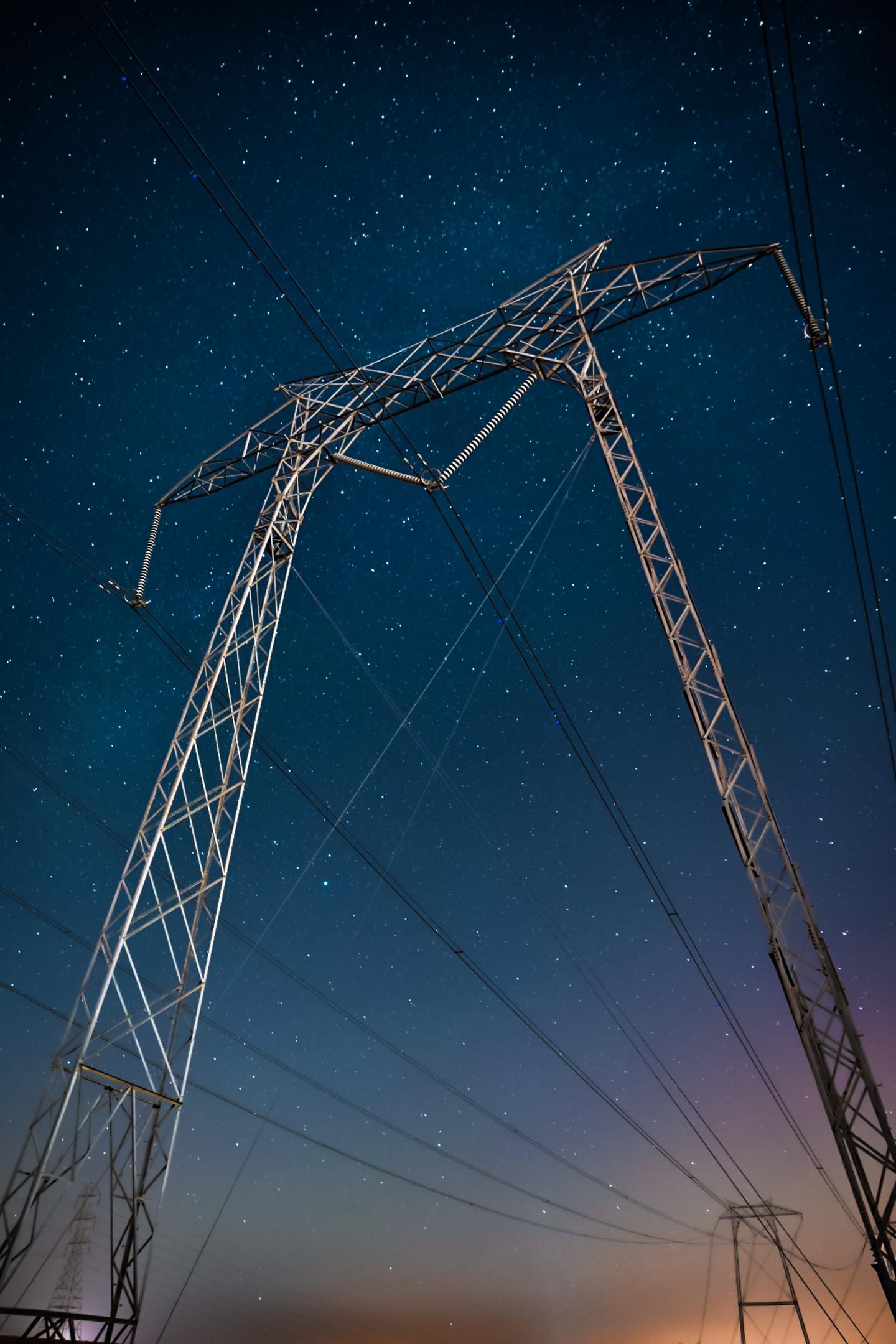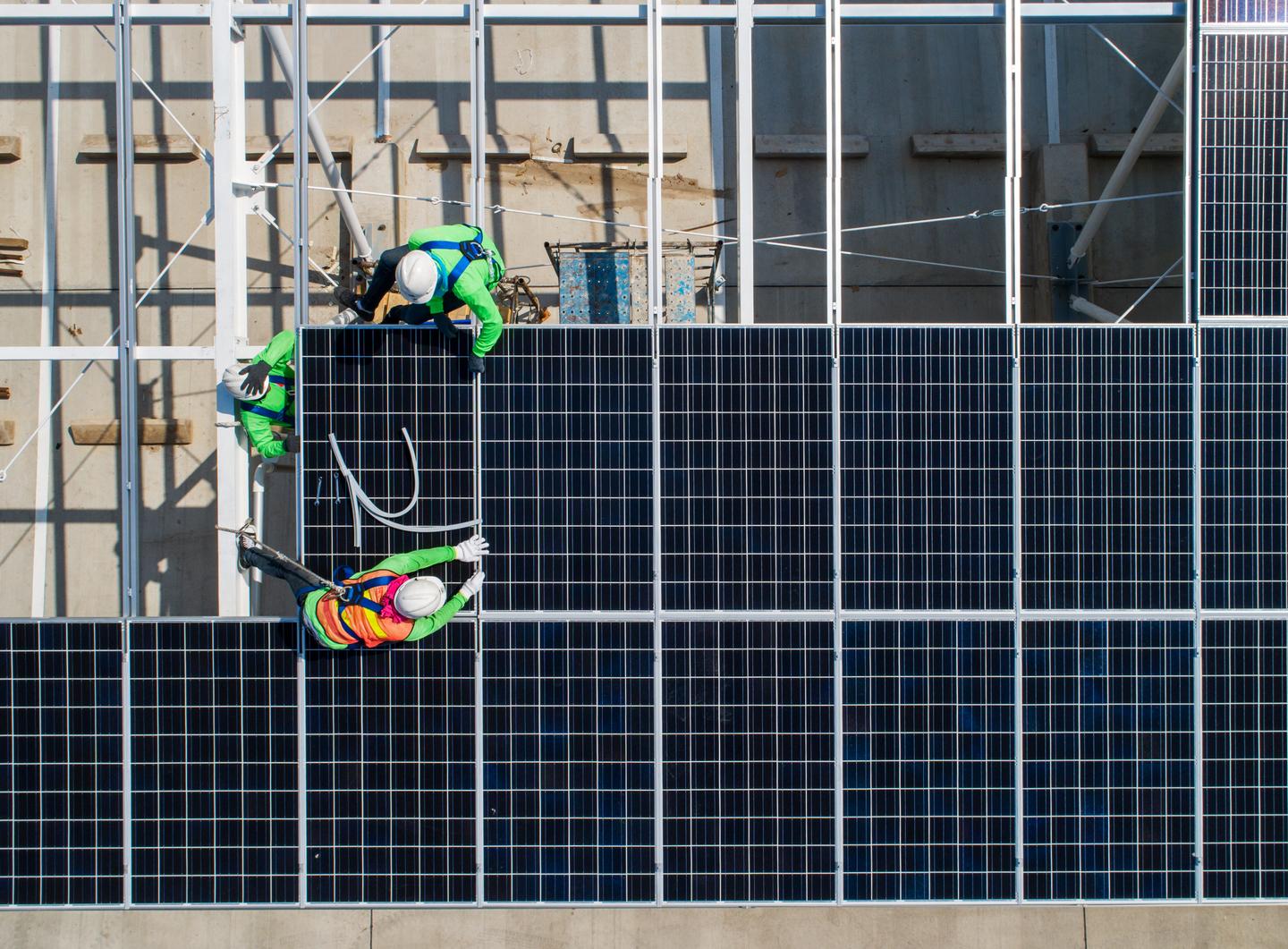The power shift: How will decentralized markets change the energy industry?
The energy industry is witnessing an interesting shift as decentralized energy markets are emerging to fill a growing niche in the ecosystem. For many prosumers and businesses, they offer tangible benefits – but there are also some reservations related to certain consumer preferences as well as incumbent energy companies’ interests. But just how justified are these concerns, exactly?

As the energy sector witnesses the rise of energy communities and a more decentralized market, a large number of homeowners and companies have the option to invest in their own production and storage capabilities to become less reliant on traditional energy suppliers. At the same time, a considerable number of people living in apartment buildings have felt excluded from the change and its benefits.
Similarly, many traditional energy companies see the transition as a direct threat to parts of their business. While decentralized energy markets don’t necessarily put these companies’ entire existence at risk, it is likely to cost them some of their revenue and even compromise the current positions of some market-leading companies.
Luckily for consumers, the true risk of disenfranchisement isn’t quite as bleak as it may seem thanks to energy communities that unlock opportunities for individuals to participate in the energy transition by investing in decentralized assets. And as with any shift in the marketplace, new developments also unleash new opportunities for incumbents who anticipate changes in market dynamics.
The basic principles of energy communities
The core concept of an energy community is to bring supply and demand closer together. Ideally, everyone involved will benefit from each other without an intermediary or a central wholesale market. The platforms that connect an energy community rely heavily on data and AI, automated processes and smart contracts, and some also use blockchain technology.
The topic is mainly present in the following contexts:
- decentralized (P2P and B2B) energy markets
- energy self-reliance for prosumers and companies
- local building projects
Decentralized energy markets
P2P energy communities enable people to take control of where and how they want to buy electricity and heating. As a consumer, one can give parameters such as, “I want to get electricity preferably from my uncle’s and my neighbors’ solar panels, and I also want to buy at a cheaper rate than my current supplier’s standard tariff.”
These parameters and the associated consumption profile are then handed over to a virtual agent that handles the supply, trading consumption and documentation for the end-user. The idea is to remove as much complexity as possible, and enable formerly passive consumers to become an active part of a community of consumers, producers and prosumers.
One example of what a decentralized market could look like can be seen with D3A, a decentralized energy exchange engine from Grid Singularity. Demands and consumption profiles can be matched and the needs of different actors can be aggregated through the platform.
This setup can solve problems like demand response for small entities, but also help deal with demand response on a larger scale. Energy communities can solve problems like grid balance on a local base by building microgrid structures, or form alliances over distributed assets based on data, automated processes and smart contracts.
There is also an interesting question related to regulations and pricing – namely, how will different actors be compensated for offering their flexibility or production and storage capacities for others. If you can match supply and demand within a local distribution grid, you could easily argue in favor of a reduction in grid fees compared to electricity that has to be transported and transformed over long distances. Current regulation doesn’t allow for these kinds of discounts.
Another question in this direction is how communities can benefit from lower prices, and whether they are allowed to offer those. Whenever wind farms and solar panels generate too much electricity, a community with extra storage capacity could for example help charge batteries or produce green hydrogen.
The industry needs a legal framework that allows more flexibility in pricing, such as dynamic prices or flat rates and bonuses. On the European level, legislators have already started the discussion, and the first government-subsidised projects around decentralized energy communities are being tested at the moment.
Energy self-reliance
For an average family household, a set of consumer-grade solar photovoltaic (PV) panels and power storage equipment can help increase the degree of self-reliance, or autarky, to roughly 70 percent over the course of a year. The German startup sonnen offers its clients the option to cover the remaining 30 percent through a tariff option called sonnenCommunity. This community consists of other PV-equipped homeowners with storage, and an unknown amount of energy that sonnen as an energy trader either buys on the wholesale market or produces with other decentralized assets. For heating, a similar model could be established by adding heat pumps to the home energy center. The more energy consuming or storing entities can be aggregated and steered centrally based on data the more significant the market power of an energy community.
For traditional energy companies, the recent pairing between the electricity and mobility industries is introducing a set of new competitors as well as risks. Several automotive companies are on their way to becoming commodity vendors for electricity and mobility. Tesla’s sunroof to storage (using refurbished car batteries) solution, EV charging option based on a wallbox at home, as well as the company’s wider Supercharger network constitute the first attempt to cover the entire value chain of electricity and mobility.
Other car manufacturers like VW and Audi are following the example, apart from offering the production side – at least so far. Energy producers, on the other hand, are looking into partnerships with car manufacturers and mobility solutions, especially companies with an EV fleet management element. The additional storage capacity introduced by EVs is an important factor for energy communities looking to help manage supply and demand.
Manufacturing businesses could also be interesting actors in energy communities. Many manufacturing companies have invested in their energy production and storage capabilities in order to reduce their operating costs and their CO2 footprint. Given that these companies do not operate their machines 24/7, there will be times when they could sell their overcapacity to the market or an energy community that can help find a suitable partner based on real-time data.
Local building projects
Over the past few years, “plus-energy” buildings and the use of waste energy have been active topics of discussion. Building projects like the Audi IN-Campus use waste heat from data centers to heat apartments and office spaces on the campus. During summer, the spaces could be cooled using heating pumps. A steady heat buyer such as a swimming pool or a washing center would be even more efficient. In Stockholm, new legislation obligates data center operators to feed their waste heat into the district heating grid. Estimates say that up to 10 percent of the heating demand in Stockholm could be met with waste heat from data centers by 2035.
Energy communities could play an important role in financing building projects that involve energy production and storage capabilities. Higher costs for energy-efficient building components could be refinanced with the revenue that will be generated with energy production in the coming years. Community-based financing models could also allow people to buy a share of e.g. a PV or wind farm, either as a pure investment product or to compensate for their own consumption with a guaranteed output per year. In cases like these, operating and insurance costs could be shared between the operator and the community.
These Energy-as-a-Service or Storage-as-a-Service models are relatively uncharted territory and will inevitably give rise to a need for new regulation, incentives and taxation. Demand, delivery and consumption tracking is crucial in order to make this concept work, which means that all properties, including private households, should have smart meters in place – which is still not a standard in some countries in Europe.
Part of the value of an energy community is the aggregated data that it can use to buy, sell or consume energy as one entity. Aggregation of data could also give rise to a whole ecosystem of players around energy communities, such as OEMs for production and storage units, spare parts, and personnel needed for asset installation and maintenance. In practice, energy communities could be organized in relatively small entities, for example local operators and microstructures. To amplify their impact, energy communities should be designed so that they can share information and collaborate if they share common interests.
Is there a place for traditional energy companies in a world of decentralized energy markets?
The concept of energy communities may initially sound like a losing proposition for traditional energy companies, but does the trend mean they will inevitably go the way of the dinosaur? Not necessarily, if they play their cards right.
For a while now, blockchain technology and cryptocurrencies such as Bitcoin and Ethereum have sparked ideas around decentralized energy markets. The core idea of taking out the middleman (i.e. banks) is not going to work the same way for energy markets. Grid companies, maintenance services and taxes will remain part of the market, and by extension, the price of energy. But if energy communities can help solve problems and bridge the gap towards a more sustainable carbon neutral energy supply, they should also be granted special conditions.
It’s entirely possible that energy communities could seize a corner of the market from traditional energy suppliers, especially if they get the benefit of favorable regulation in the next few years. But even that would still leave incumbents plenty of space to work with.
One reason why traditional energy suppliers are particularly interested in decentralized energy markets is that they see plenty of business potential in platform ownership. By becoming the administrator or platform owner of an energy community, energy companies could benefit from the trend and incorporate their own assets as fundamental parts of the community. Additionally, it enables them to integrate other players, such as mobility operators, creating long-term value for customers and building loyalty with their help. Also – even if more and more decentralized markets pop up, it is not unreasonable to guess that many consumers will still be quite happy with the status quo and at least initially stick with their current energy supplier, simply because it is more convenient.
With growing energy prices and an increasing demand for affordable clean energy, the motivation to become an active player on the energy market could change. Decentralized markets and energy communities will gain traction if the financial benefits can be shared between the members. As energy markets change, energy communities could be one important part in tackling problems such as demand response and grid balance, and help bridge the gap when transitioning from fossil to renewable energy.
As with most emerging and potentially disruptive trends, it’s a question of when we’ll see energy communities’ impact on the status quo, not if. How extensively they will affect the business of incumbent players depends on their ability to capitalize on the shift and adapt to the changing market landscape. In order to convince customers, this needs to happen on their terms – lower prices are a good start, but acceptance also requires demands that the new services adapt to the needs of users and to be easy to use.
Interested in changing energy markets? Make sure to check out our latest whitepaper!
 Jan HerrmannDirector Corporate Innovation
Jan HerrmannDirector Corporate Innovation



